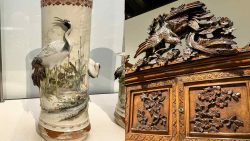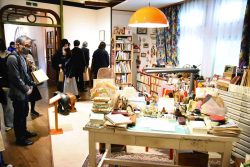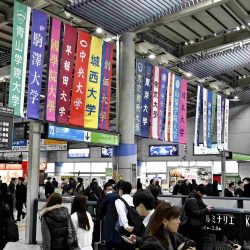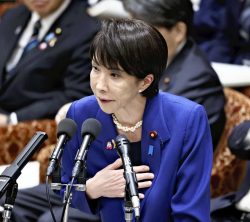
Two women gaze at the moon in Shoen Uemura’s three paintings collectively called “Snow, Moon, and Flowers.”
13:55 JST, September 22, 2024
Highlighting traditional Japanese autumn imagery, the “Nature’s Splendor: Scenes of the Moon and Water” exhibition is currently running at The Museum of the Imperial Collections, Sannomaru Shozokan in Chiyoda Ward, Tokyo.
Hiroyuki Shimatani, the executive director of the museum, said they pared down the overall subject of nature after much consideration.
“We ultimately chose items with designs associated with the autumn moon because it is such a clear image for many Japanese people,” he recently said.
The themes shine though in each of these works among the Imperial collection, whether through the full moon and rabbits pounding mochi or with mist in the mountains and crashing waves.
The exhibition features two rooms, one displaying paintings and calligraphy, and the other featuring decorative arts.
Almost everything on display was made from the 18th century to the early 20th century.
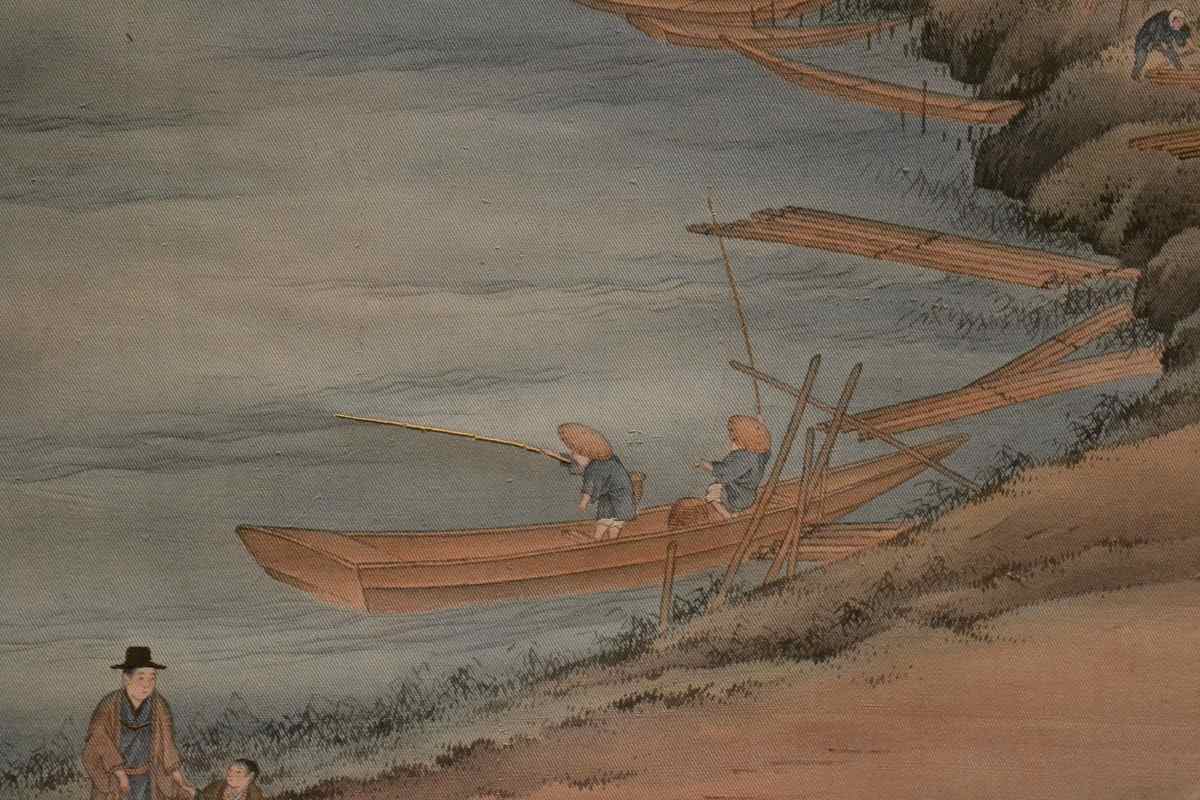
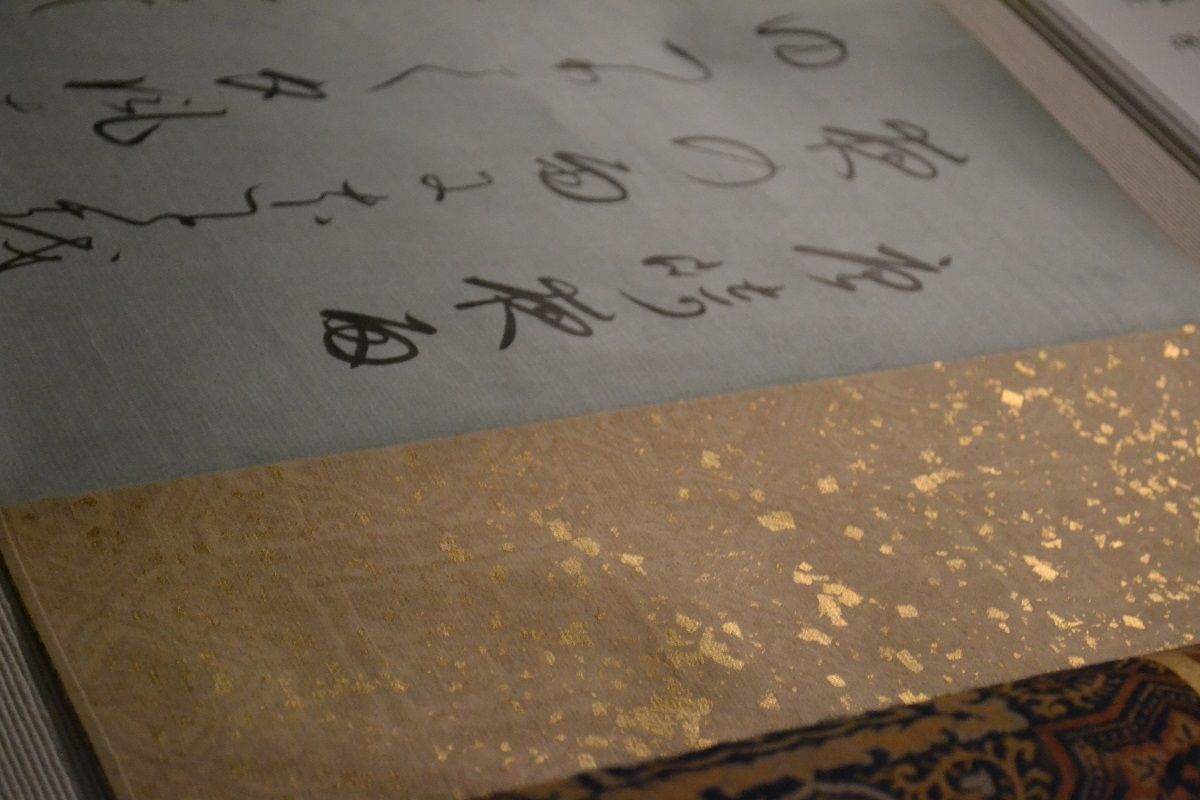
Left: Men go fishing in “Togetsukyo Bridge in Arashiyama,” a large embroidery piece that shows people’s daily lives.
Right: An Edo period scroll of Waka Poems on “Eight Views of Omi Province”
The paintings are by many artists with diverse styles. Some, like the one depicting a trio of playful foxes, have a soft, dreamlike quality. Others, such as the one of Kumano Nachi Taisha shrine in Wakayama Pref., boast distinct lines, even in areas shrouded by mist.
One of the highlights of this section is a trio of Shoen Uemura paintings that depict people in elegant Heian period dress fixating upon seasonal images.
The decorative arts include silver vases, shelves and a statue. Many of these also hearken back to ancient times, including a maki-e (lacquerware with gold and silver powder in the design) box for writing utensils featuring Murasaki Shikibu, the author of “The Tale of Genji,” sitting on a veranda.
This exhibition invites visitors to take in the finer points of each piece. Up close, one can find people going about their day, birds hidden in the trees and torii shrine gates barely visible in the background.
There is a surprisingly large embroidery piece in the decorative arts section that depicts Togetsukyo bridge in Kyoto after a rain shower. It is rich with detail and depth of field, including people at work in the background, birds taking flight and falling flower petals in the foreground.
For the “Evening Moon” statue in the same area, be sure to follow the figure’s eyes for a traditional Japanese autumn scene that feels like it belongs in a classic film.
The exhibition runs through Oct. 20 and tickets are ¥1,000 for adults.
"Culture" POPULAR ARTICLE
-
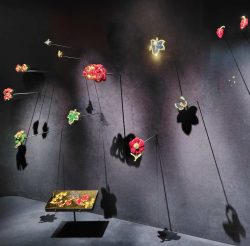
Van Cleef & Arpels Dazzles with Art Deco Artisanry at Tokyo Exhibit
-

Disney’s ‘Twisted-Wonderland’ Animated Series Puts Villains in Spotlight: New Show Features School Inspired by Classic Disney Films
-

Japan Plans to Distribute Manga Overseas Via New Platform
-
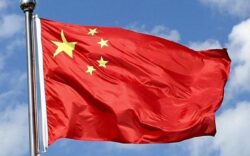
Ayumi Hamasaki’s Shanghai Concert Canceled Day Before Schedule as Part of Beijing Backlash
-

‘The World Masterpiece Theater Series’ Celebrates 50 Years; Animator Looks Back on Creating Anime Classics
JN ACCESS RANKING
-

Tokyo Economic Security Forum to Hold Inaugural Meeting Amid Tense Global Environment
-

Keidanren Chairman Yoshinobu Tsutsui Visits Kashiwazaki-Kariwa Nuclear Power Plant; Inspects New Emergency Safety System
-

Imports of Rare Earths from China Facing Delays, May Be Caused by Deterioration of Japan-China Relations
-

University of Tokyo Professor Discusses Japanese Economic Security in Interview Ahead of Forum
-

Japan Pulls out of Vietnam Nuclear Project, Complicating Hanoi’s Power Plans



